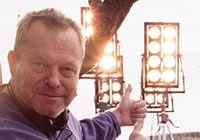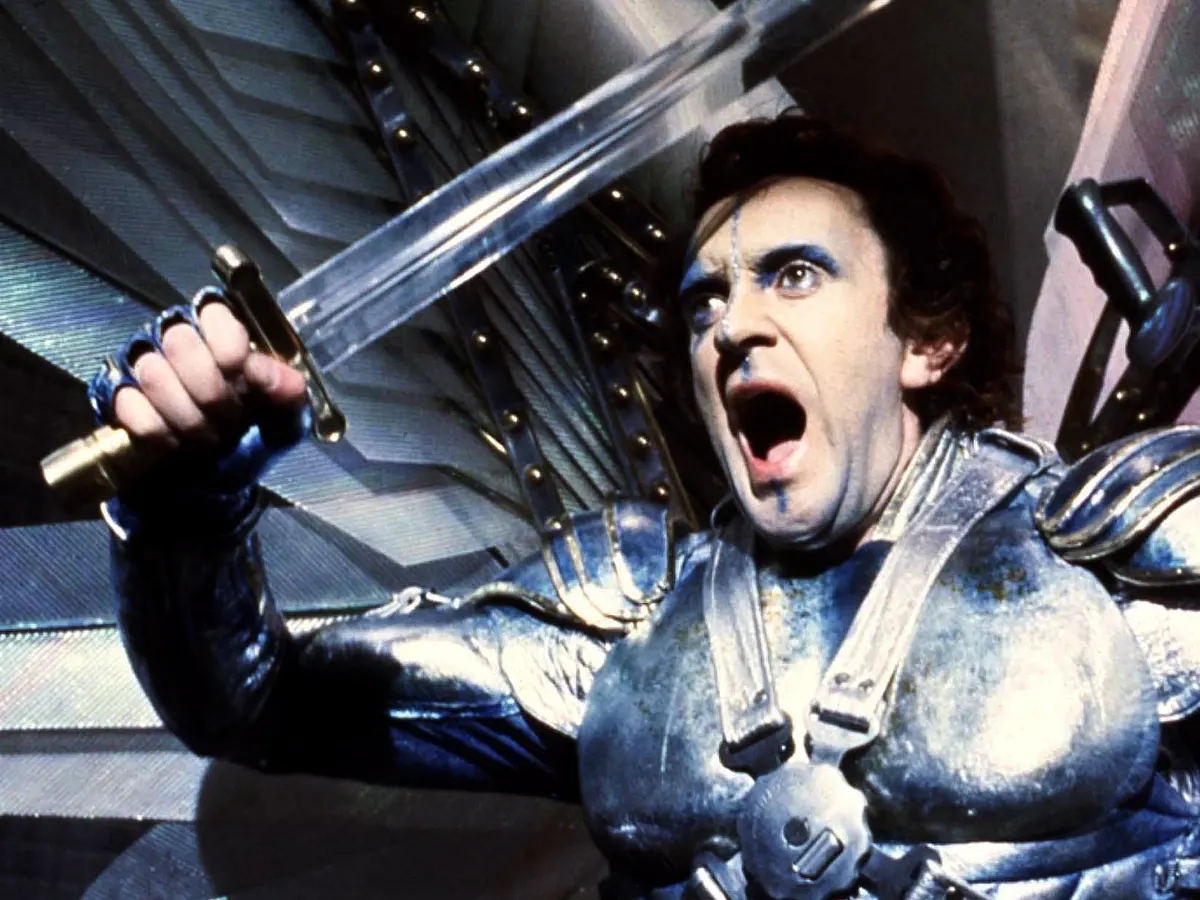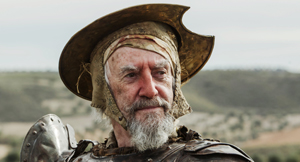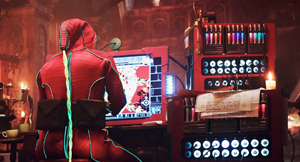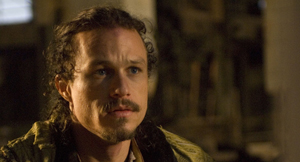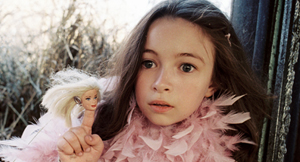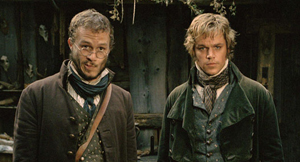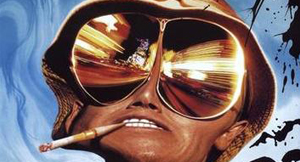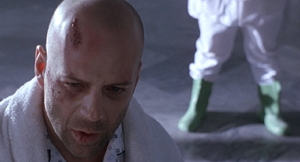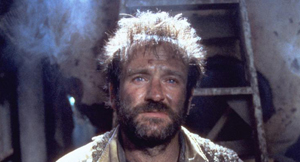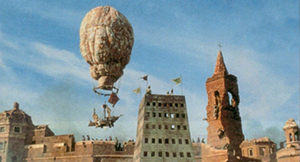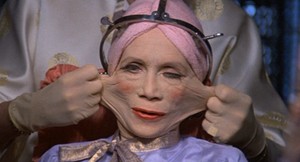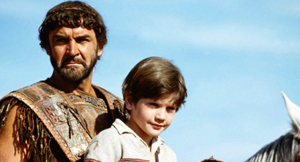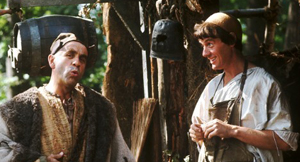Mick Audsley, Editor on The Zero Theorem, talks to Dreams
Mick Audsley is one of Britain’s most experienced editors, having cut a large number of significant British films. For Terry Gilliam, he edited Twelve Monkeys (1996) and The Imaginarium of Dr Parnassus (2009). He also edited Gilliam’s short film The Wholly Family (2011).
In this interview, Audsley talks about the editing challenges during the postproduction of The Zero Theorem. The interview took place in May 2013, when most of the editing work had been completed.
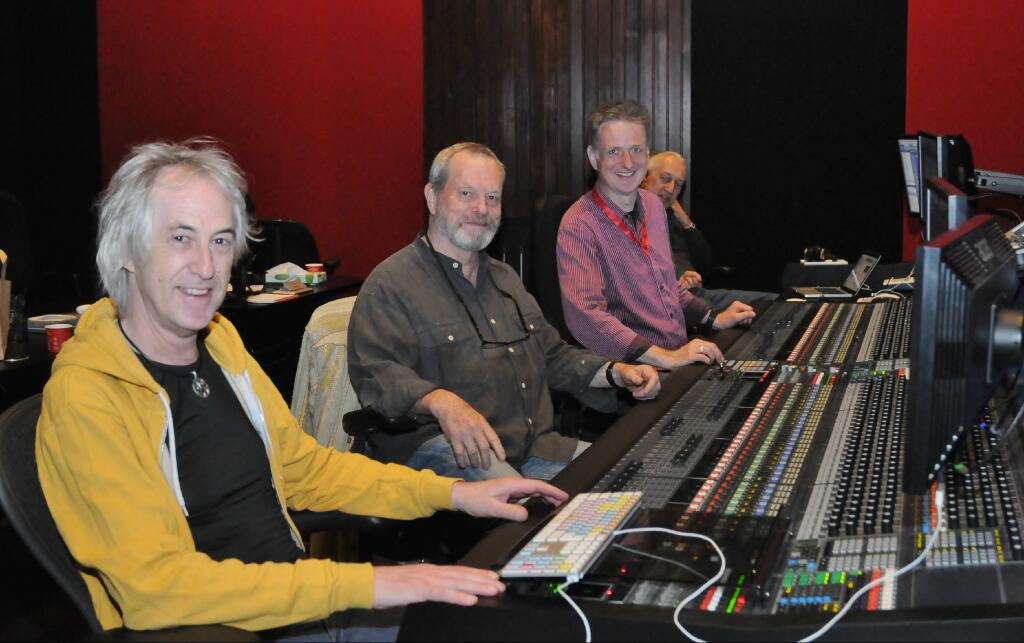 |
Mick Audsley hiding at the back, at the mixing desk at Twickenham Studios |
Phil Stubbs: What stage are you at with the editing of the picture?
Mick Audsley: We are into the second week of sound mixing, so content-wise the picture is locked pictorially. We are waiting for delivery of visual effects shots. About half of them are complete and approved, and the other half are due in the next three weeks. We are recording the music in a week’s time. Then we begin the final mix in June, we will complete the final mixing in eight days. The picture delivery is a little bit behind, but we are optimistic that it will all be done in the next month. So the picture’s nearly done – and we’ll see what we’ve got.
When you saw the footage coming in from Bucharest, what were your first thoughts?
Well, I was just so impressed. We had huge budgetary constraints on this film, with it being a very ambitious project for the funds available. It is this amazing wonder at how Terry, Nicola and Dave – everybody in fact – have managed to produce this expansive work with so little funds.
It’s a fraction of the Dr Parnassus budget I understand…
Yes, I believe so. And we thought Parnassus was cheap and cheerful! This one is a very different movie obviously, but nevertheless it’s still very ambitious within the constraints that it has. It’s essentially a chamber piece, in this chapel where Qohen lives. Yet occasionally the world expands outside, and that is very ambitious to create, the exterior world of this futuristic city, and the workplace, and that whole thing is a world that had to be created.
So at one level it’s a chamber piece but it nips outside every now and then. Terry’s worlds, be they simple or complex, are all unique, so the question is how to balance those issues. Of course if you have a hint of an outside world, do you desire to get back to it, or is it better not to deliver it? In other words, do you make the audience want it, and then deliver it when they really need it? Such are the editorial issues we’ve had to deal with.
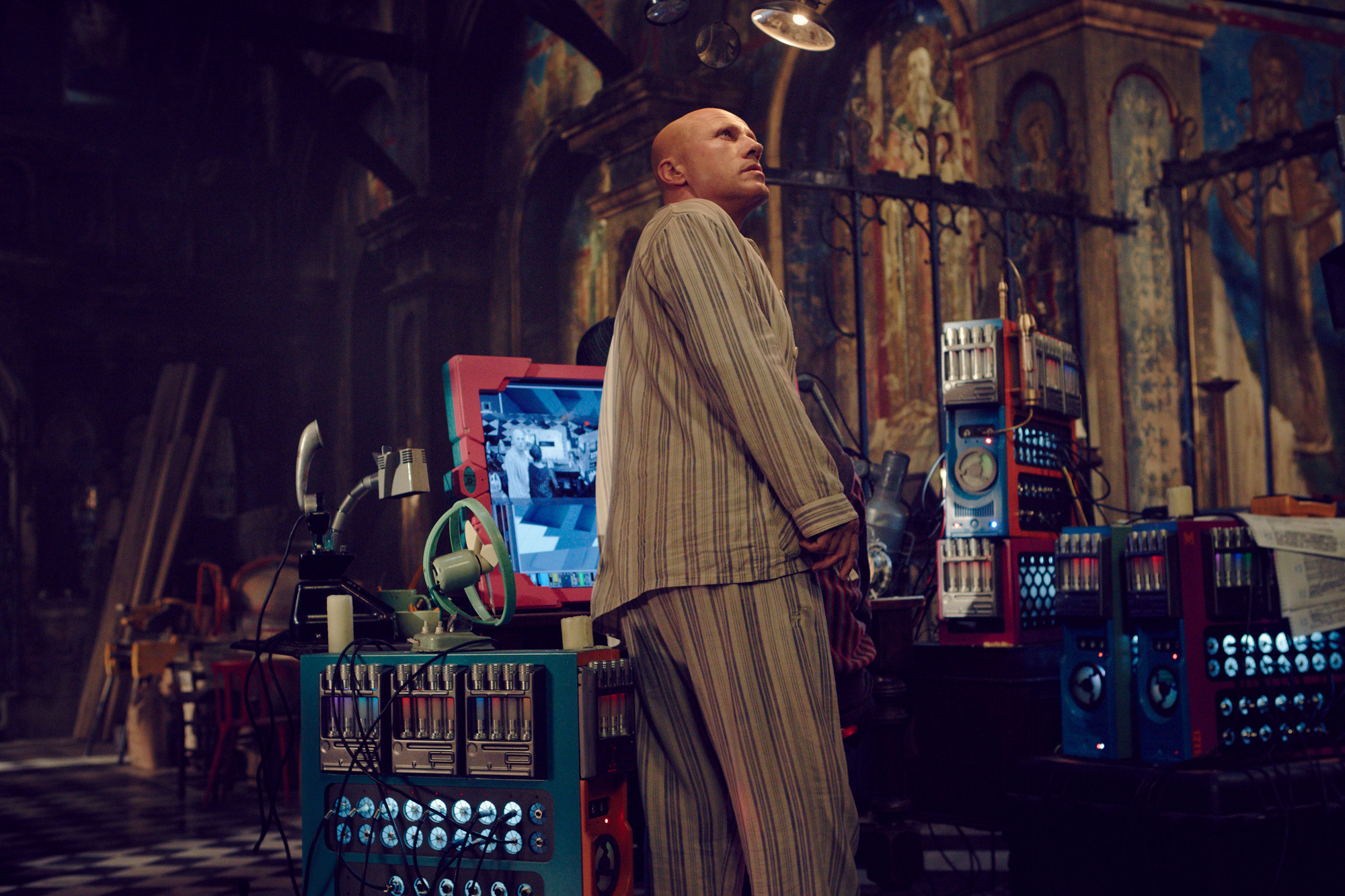 |
When you had completed the first cut, what were the problems that you had to solve?
I think Terry would corroborate this, but on the page it was very verbose. It was very much a script that was balanced towards its verbal drive and intelligence. Terry had to visualise that and as you and I know, the balance between the verbal and the pictorial is very complicated. I think we found that from a cinematic point of view, storytelling-wise, it was very heavy if told in a linear fashion, as it was written.
After we’d seen the first cut, we thought: OK it’s all good stuff in there. But we thought maybe the narrative can be told in a more interesting way, or a less linear way. So we opted for a more cerebral route. Because it’s essentially a story of a man who is alienated and burdened with what we see now – what we will all receive in the world of the future.
Qohen is somebody who has to be brought back to life; he has to learn to love himself again because the burden of his alienation is so strong. Although he lives in a world where communication is everything, he is the least communicative person in the world. So when we saw the first cut all strung together in a row, we thought as a cinema experience (rather than on the page) it might be best to move the cinematic sentences around in a more interesting way.
That’s what we did quite easily and quickly. It’s just a way of serving a meal, really: hopefully you’ll be satisfied in the end. It was quite obvious that, as written, it read well. Yet we had to take the strength of the writing and with Terry’s unique cinematic eye, realise it in a cinematic language.
There wasn’t any doubt, we all knew. We needed to take what was written up another notch. It’s what I would call the normal development of any movie these days.
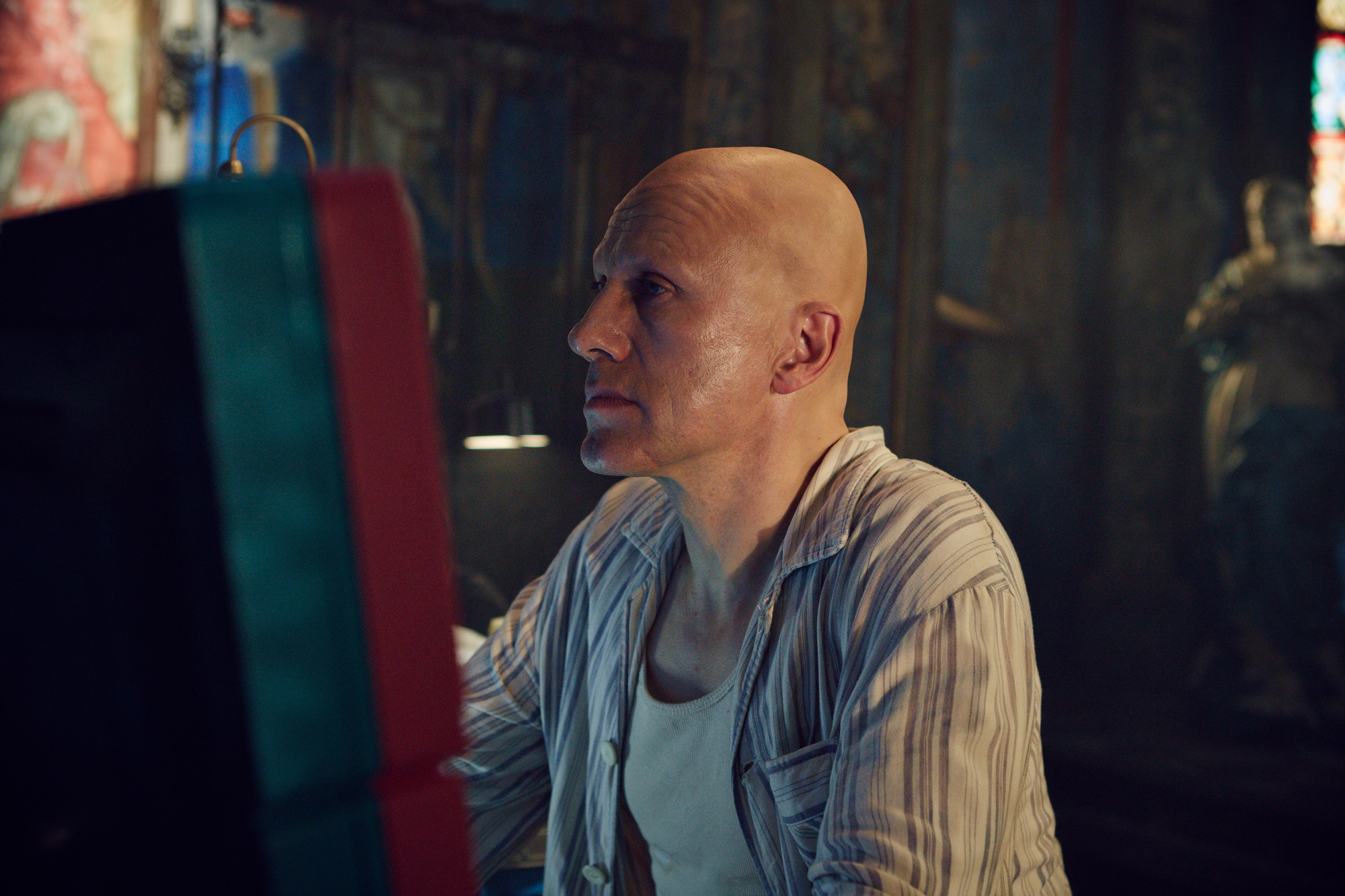
How radical was that reordering, will it leave people scratching their heads?
Not hugely radical. There were a lot of repetitions in the screenplay, since we’re dealing with obsession in the film. There’s a big MacGuffin in the film: a man who is waiting for a phone call. So we’re dealing with people expressing themselves in a repetitious way. Is that obsession or is that repetition? We’ve been trying to find a balance between how that works – because audiences pick things up so swiftly.
So is it good that this repetition means that his neurosis is so profound: this obsession, this persecution that he feels? Or is it something which is editorially a bit fat? In fact we did take it down, so a bit of both actually – as is always the way.
What was very interesting was I think Terry and I immediately saw that it had to go up another notch editorially, and that work we did very, very quickly.
Are there any other editing challenges?
Yes, and I don’t know if we succeeded, and until you’ve seen the film, you’d be a better judge than me. There is a point in the story where initially it starts out to set up an individual within a world, and then in a way it becomes a chamber piece in the centre and people come into the rather claustrophobic world: his environment, his habitat.
I had always worried that we would be too locked down to the interior world of the chapel, whether that would be not necessarily a good feeling of claustrophobia because that can work for you, but it might be a less constructive one, be claustrophobic in a negative way. Terry and I had worried very much about the centre of the film.
Yet we found out that the chapel is where the relationships develop between Qohen and Bainsley, with Joby, and with Bob. Audiences have actually been very engaged by the relationships, so staying in the chapel – rather like a play – seemed to be much more rewarding than we’d imagined, because the relationships are so strong. In the end, the continuity of place didn’t seem to be as inhibiting to the forward motion of the film as Terry and I had thought, and that came as a surprise to both of us.
What has been your favourite sequence?
I never see the film as sequences, but as a whole. The thing that has been challenging is the notion of a very abstract endeavour of a man having to solve a mathematical and algorithmic puzzle. The audience really doesn’t know what it means, but we’ve got to engage the audience in a basic endeavour of something that they don’t know. But as a human endeavour it has success and failures, and trying to imply information which the audience can’t possibly ever really understand, and to make them connect with it at a human level and to make people believe it – that’s been very challenging.
We are asking the audience to participate in an endeavour where they want the main character to succeed. Qohen doesn’t fully understand – he has to pedal away and do tasks, and you are asking the audience to connect with something like that. There isn’t a common experience in the character on the screen and the audience.
If you show me making a meal and burning everything, we all understand that – because it’s part of common experience. So you feel sympathy for common obstructions which get in the way of what I’m trying to achieve. In this case we had to imply the endeavour. And make people feel for his successes or failures.
The science is all invention; it’s all metaphor. It’s very hard to get the audience to engage with something they don’t have a reference in human terms to relate to. It’s a metaphor, a paradigm for something else. We are all trapped by computers, however, so they all get that bit very well!
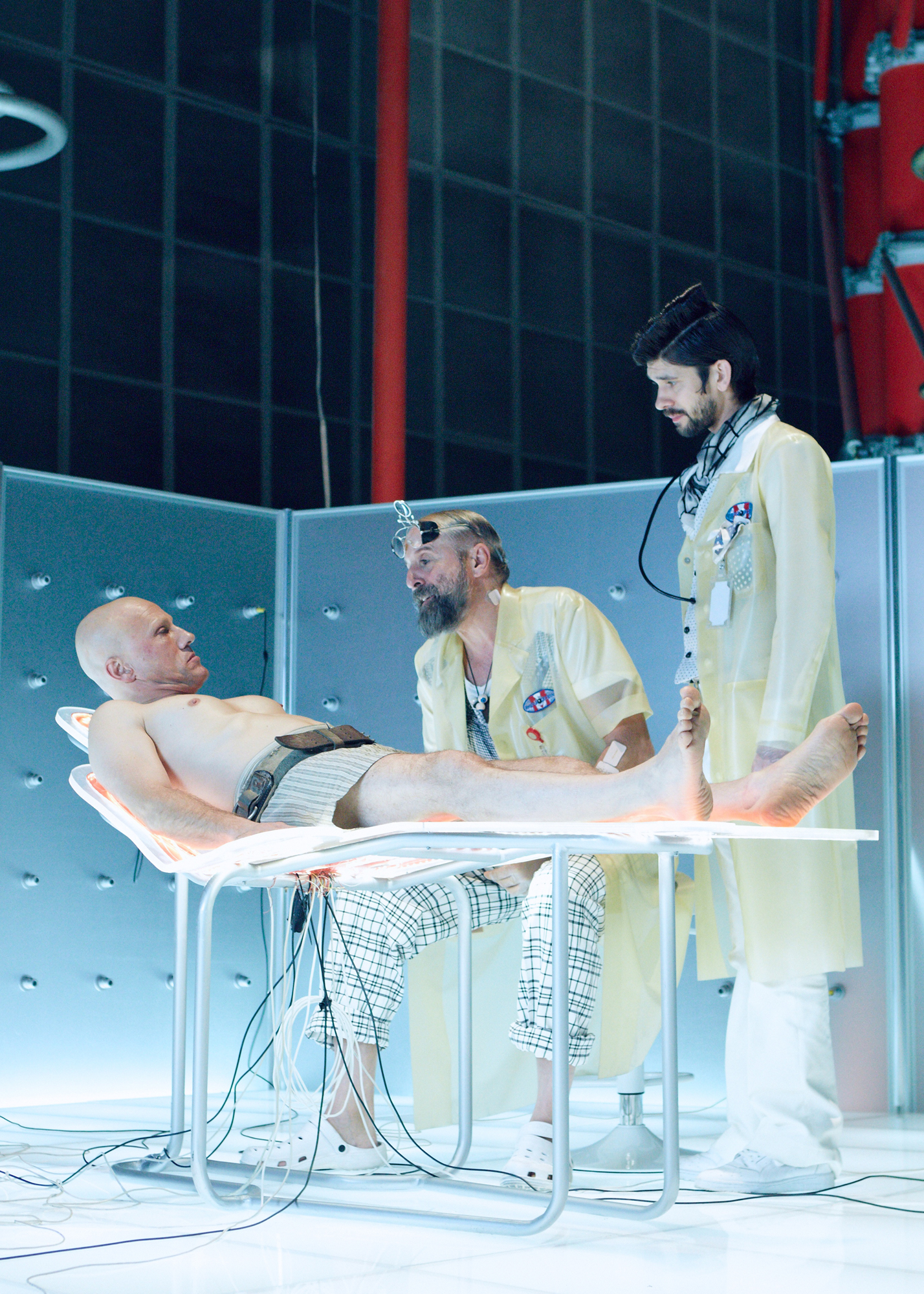 |
How would you describe the postproduction culture? Is it creativity arising from having the time to solve problems, or is it stressful and frantic?
It’s not frantic because I started in October, so I’m 28 weeks into the job. Also Terry is such a wonderful collaborator and works in a way that many other directors don’t: which is to be involved in the nicest possible way with all aspects of the editorial process – and that’s a very joyous experience. He is somebody who not only gets a kick out of what you do as a contributor but also understands what you have done. We can bounce things off together, so it’s based on trust.
I read this script five or six years ago when it first came up. I always realised that there was going to be a very big gap between the screenplay and the making of the film, more so than normal. I’m very cognisant of that process, obviously it is my job to interpret screenplays, and writers are usually my closest friend in the editorial process.
A screenplay is merely an architect’s drawing, of what the real thing actually is. These days people understand less the relationship between the screenplay and how a movie works with a visual language, and the language of montage.
Has there been any interference in the creative process from producers?
No I don’t think so, it’s always been understood that Terry had final cut on this film. So that’s a nice position for an editor to be in. We always have debates and discussions. Interference? No. That would be someone telling you to do it this way, and because of Terry’s stature, that was never a factor. He has final cut.
We try and listen to everybody’s thought processes in production. But it’s not interference; we certainly haven’t been backed into that corner.
Is there anything within the film that provides you with a personal level of resonance?
I think seeing a guy in the opening shots sitting naked in front of computer screen. His life is harnessed in manipulating something on screen. As a film editor how can I not relate to that!
I think it’s very much a document of our time, about the notion that the world of communication can also have an aspect of isolation. That really is perhaps what this is about, here’s a man set a task which is nebulous, and he is made to believe it is of value and he is alone, he’s cut off. All the communication in the world does not necessary connect you spiritually.
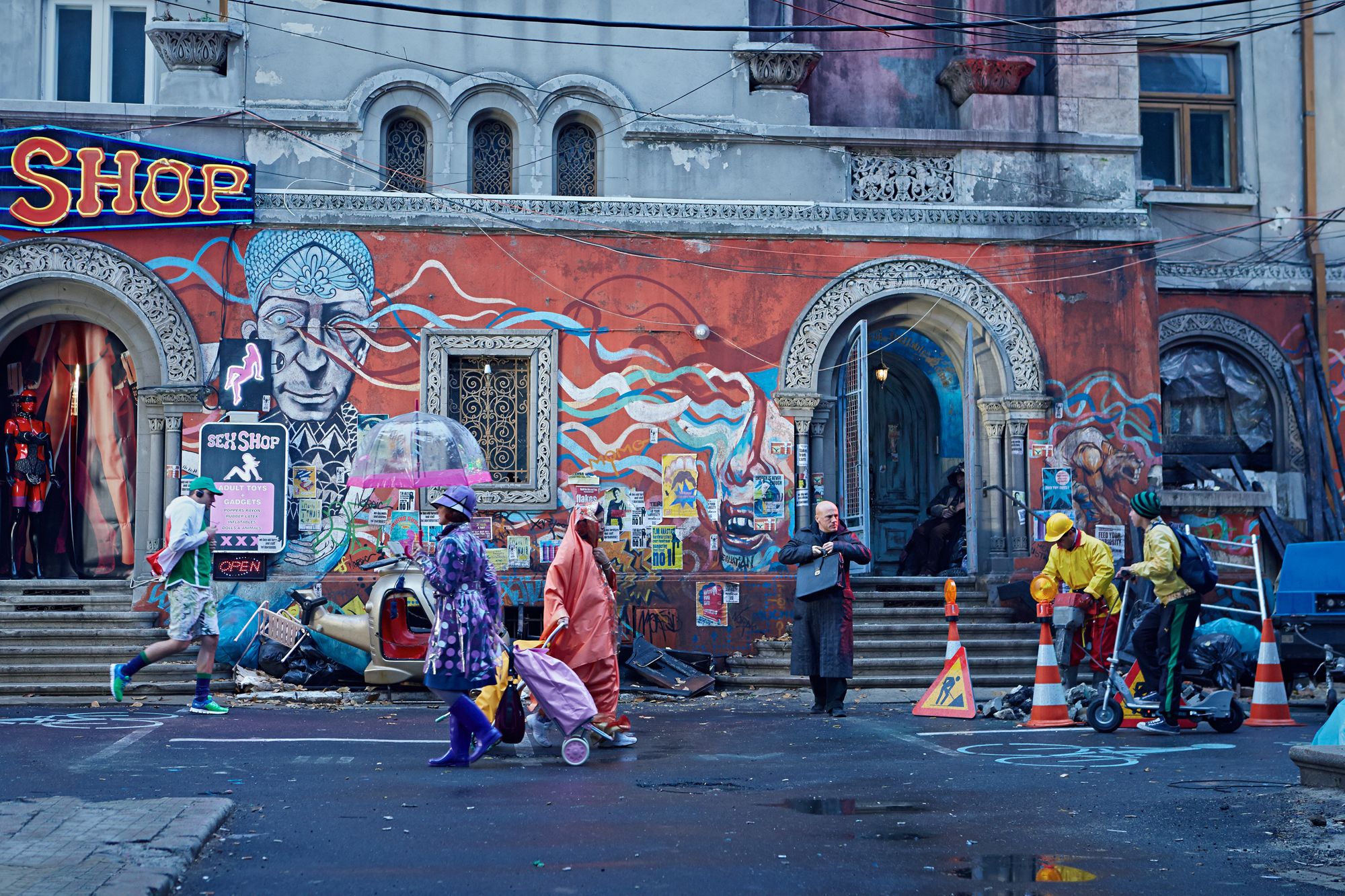 |


